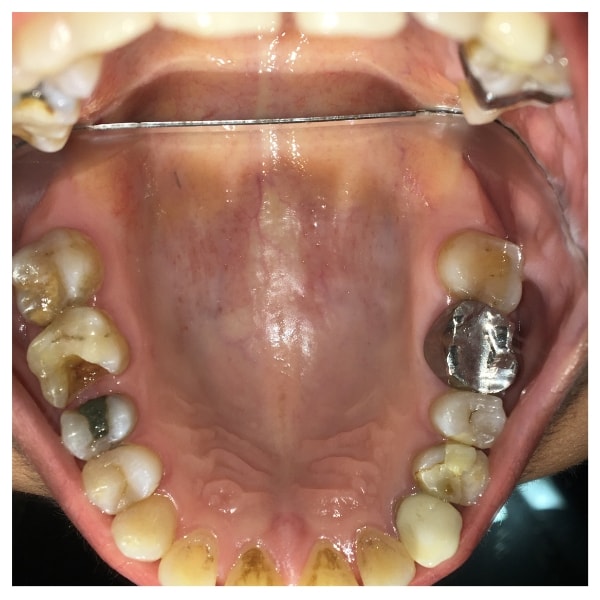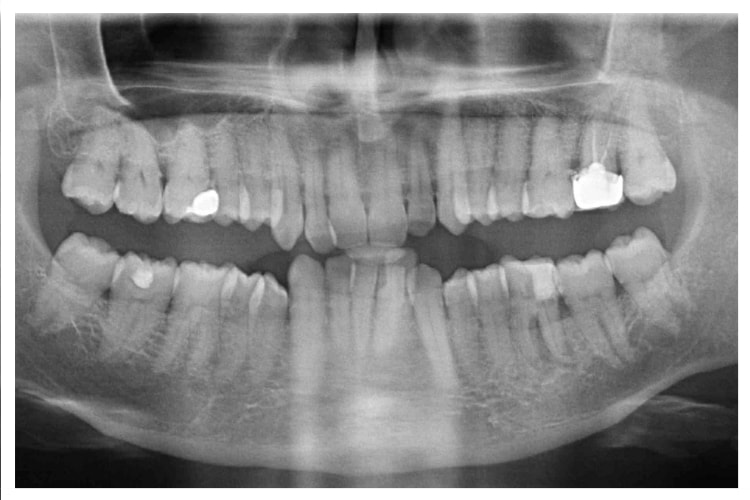
Intra Oral Examination
A complete examination of the neck, head regions, and oral cavity areas form part of the IntraOral Examination. As part of this, a thorough examination of the hard tissue and the soft tissue are carried out.
Hard Tissue: An exhaustive check is performed on each tooth of the oral cavity. Each tooth will be examined in detail for the following and would be documented for the prevailing conditions
- Leakage
- Dental Decay
- Positions of Teeth
- Any other dental work that has been already carried out
- Impactions
- If there are any missing teeth
- Fractures which may be old
- Deformed Teeth
- Broken Teeth
- Any tear in the teeth
- Any abnormal growth of the jaw bone
Following a comprehensive hard tissue examination, detailed soft tissue examination would follow.
Soft Tissue: Soft Tissue Intraoral Examination involves inspection of the gums, throat, mouth and the tongue.
The examination would include the following regions,
- The inside of the lips called the labial mucosa and the lips.
- The inner part of the cheeks known as the buccal mucosa.
- The hard palate or the roof of the mouth
- The soft palate areas of the mouth.
- The top part and the sides of the tongue will be examined in detail. The dentist would hold the tip of the tongue with a piece of soft gauze and move it gently from side to side as the entire area is inspected for swelling, the texture, and color to determine that the oral cavity is healthy.
- The floor of the mouth
- The salivary glands
- The gums called as gingival are extensively checked.
- The jaws or TMJ are checked for any abnormalities such as bumps or any inflammation.
- The general oral region is checked for any tumor or cancer growth. This is a sort of a cancer screening test. A preliminary investigation to find the presence of such abnormalities is always a better option.

Extra Oral Examination
The Extraoral examination ranges from detailed inspection of the:
- Face
- Lips
- Cheeks
- Chin
- Lymph nodes
- TMJ
The idea behind doing an extraoral examination is to find any abnormalities that may exist in the natural structure which may possibly need correction.
After the Intraoral and extraoral examinations are conducted, the dentist would typically summarize any other diagnostic tests that are required to conclude and firm up on the actual dental and oral issues. These diagnostic tests provide accurate findings of the underlying condition and can be useful in devising a treatment plan. The diagnostic tests that your dentist at Expert Dental may recommend are

Diagnostic X-rays
The dentist will recommend taking X-rays to find pathologies in teeth and surrounding tissue/bone structure.
- IOPA taken in the clinic – a small X-ray which shows 1 or 2 teeth
- OPG – full mouth X-ray this is very necessary
Digital photographs and intraoral camera pictures will also be taken to help you understand your concern better.
Blood Test
The other vital investigations would be Blood Tests that range over:
- Blood sugar
- Bleeding time/clotting time
- Total count / differential count
Cone Beam CT
Cone beam CT is also called a 3D X-ray. Here the X-rays are divergent and hence provide a 3dimensional imagery of the entire anatomy of the oral region giving the diagnosis more accurate. An abnormality present in the natural teeth, gum and TMJ structures is also recorded. The images produced by the Cone Beam CT find great use in dental implants planning, and in the field of Orthodontics.

Conclusion of Dental Examination – Treatment Plans
Following the examinations, a personalized treatment plan will be made which will take care of your current problem and prevent future ones from occurring. The following sequence of events is anticipated while planning the treatment.
- A final consultation will be held where the findings are presented and discussed
- An outline of the treatment plan made keeping in mind the current and past concerns.
- A discussion on the consequences of not going ahead with the treatment plan
- Any alternative treatment options are present.
- Cost implications of the treatment plan.
- Scheduling of appointments before any treatment begins.
- Patients are then encouraged to take time to consider treatment options and voice their doubts
All the above are done so that when a treatment plan is decided upon, everyone is satisfied in the process. Take your first step towards achieving great dental care by taking a consultation with our dentists.
